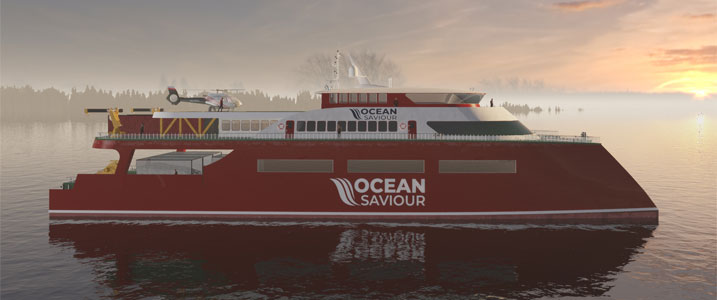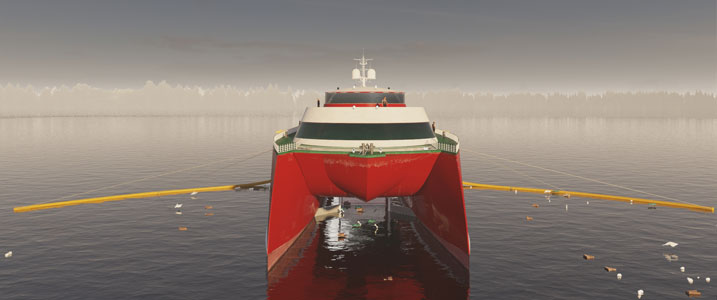

The vessel will be a world-first, self-powering 70m tri-deck clean-up vessel, purposefully engineered to locate, retrieve and recycle plastic from the ocean to preserve one of our most valuable assets for future generations.
Central to its design are Manta Collector Array collection systems at the side and front of the vessel which will deploy and draw in plastics. The plastics will then be fed into an onboard conveyor, chopped finely, milled and processed through an onboard plasma gasification facility which will destroy it completely with minimal atmospheric pollution. The product of this pioneering process will then be used to fuel the vessel, making it self-powering.
This compact waste destruction process was first implemented for marine use onboard the USS Gerald R. Ford Aircraft Carrier, by advanced plasma processing company, PyroGenesis. The US Navy specified the system for the ship in order to have a highly compact, sailor-friendly means of destroying waste out at sea, as an aircraft carrier can be out for many months without coming to port. The team behind Ocean Saviour is currently investigating several potential partners in relation to the provision of plasma technology.